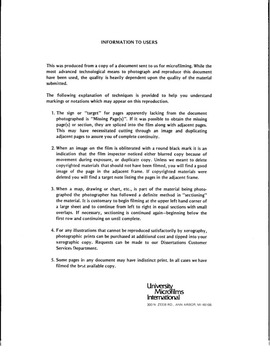| dc.contributor.author | Krayer, Karl James. | en_US |
| dc.date.accessioned | 2013-08-16T12:28:32Z | |
| dc.date.available | 2013-08-16T12:28:32Z | |
| dc.date.issued | 1982 | en_US |
| dc.identifier.uri | https://hdl.handle.net/11244/4975 | |
| dc.description.abstract | This study examined separate public conversations between twelve husbands and wives in an effort to relate conversation behaviors to their perceptions of context-free and context-specific communication equity. Couples were arrayed according to husbands' and wives' perceptions of context-free and context-specific communication equity and were divided into three cells (high, medium, and low) for both equity formulations. Conversation behaviors were gathered from four questions and then analyzed according to three systems: structural, functional, and topic-change. Conversational behavior patterns, using constructs from each of these three systems, were related to the three levels of context-free and context-specific communication equity for each defined array. Because of the tight distributions resulting from the context-free and context-specific communication equity instruments, only the high and low cells were analyzed. Equity theory best accounted for conversation patterns for the structural system, turn-initiation, and topic-initiation. | en_US |
| dc.format.extent | v, 260 leaves : | en_US |
| dc.subject | Speech Communication. | en_US |
| dc.title | Communication equity and conversation in marital dyads : | en_US |
| dc.type | Thesis | en_US |
| dc.thesis.degree | Ph.D. | en_US |
| dc.thesis.degreeDiscipline | Department of Communication | en_US |
| dc.note | Source: Dissertation Abstracts International, Volume: 43-02, Section: A, page: 0305. | en_US |
| ou.identifier | (UMI)AAI8215909 | en_US |
| ou.group | College of Arts and Sciences::Department of Communication | |
